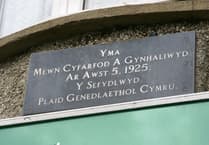Ceredigion is set to be paired with Pembrokeshire in new look constituencies for the 2026 Senedd elections, with Dwyfor Meirionnydd joining Montgomeryshire and Glyndŵr into a single new seat. The Democracy and Boundary Commission Cymru has published Initial Proposals for Wales’ new Senedd constituencies which will see the creation of 16 constituencies to replace the current 40 constituencies and 5 regions.
These new constituencies will take effect automatically at the 2026 Senedd election, and six MSs will be elected from each one, using the D’Hondt method currently used for the Senedd’s regional lists.
The Commission has had to create 16 constituencies by pairing Wales’ 32 UK parliamentary constituencies, ensuring that each constituency neighbours the one with which it is paired.
The Commission considers that constituencies should only be thought of as “contiguous” or neighbouring if it is possible to travel throughout it without having to leave the constituency.
The Commission also considered local ties, such as shared history, the Welsh language, and socio-economic considerations in an attempt to propose constituencies which feel as natural as possible to people across Wales.
Having published its initial proposals, the Commission has opened a four-week consultation on the plans.
Chief Executive of the Democracy and Boundary Commission Cymru, Shereen Williams MBE OStJ said: “Today marks a very important step in the journey towards reforming the Senedd.
“At the 2026 Senedd election, our national parliament will be elected using an entirely new system, with entirely new constituencies.
“The Commission is confident that our initial proposals represent a very good first step in creating Wales’ 16 new Senedd constituencies, but we know from experience that these processes are always strengthened when we hear from the public.
“So we strongly encourage everyone to share their views with us, whether they support or oppose the proposals, so that we can go on to further strengthen the map ahead of the next election.”
The initial consultation period closes on 30 September, and the Commission will publish its Revised Proposals report in December 2024.
Another four-week consultation period will then follow with a final decision expected in March 2025.





Comments
This article has no comments yet. Be the first to leave a comment.